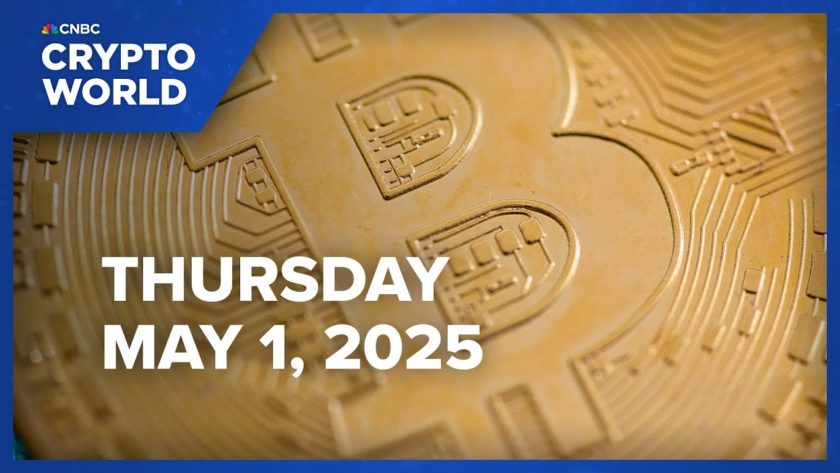Crypto Myth Busting, By Katie Haun
November 8, 2018 by Paul de Havilland
Katie Haun has ventured on the treacherous path of crypto myth busting in a September 2018 debate in Mexico City with crypto skeptic Paul Krugman called the “Let’s Settle This” debate. Given the towering figure that was her opponent, Haun faced a daunting task.
Also read: Silence Prompts Fears CoinEx and ViaBTC CEO Haipo Yang Is Under Arrest in China
Subscribe to the Bitsonline YouTube channel for great videos featuring industry insiders & experts
Crypto Myth Busting–it Really Is Time to Set the Record Straight
Haun had the advantage of a range of viewpoints and experiences. She currently sits on the board of Coinbase and is a general partner at Andreessen Horowitz’s a16z venture capital firm. She has taught cryptocurrency at Stanford Business School. As a federal prosecutor at the Department of Justice, she led the investigation into Mt. Gox and brought the corrupt agents in the Silk Road case to justice.
Paul Krugman is an Op-Ed columnist for The New York Times and Professor of Economics at the Graduate Center of the City University of New York. He also happens to have won a Nobel Memorial Prize in Economic Sciences in 2008 for his work on international trade and economic geography.
“Let’s Settle This” was a heavyweight bout. So did anything get settled? Let’s focus on Haun’s crypto myth busting arguments.

Crypto Myth One: Crypto is Anonymous and Criminal
Drawing from her first encounter with bitcoin as a prosecutor, Haun cited the example of the federal agent who was extorting money from Ross Ulbricht during the Silk Road investigations. She pointed out that had the agent used cash and not a blockchain-based currency, tracing his transactions would have been more arduous, if not impossible.
“Any technology worth adopting is often first adopted by criminals. It turns out that criminals are great beta testers of new projects and new technology.”
Haun likened these early days of cryptocurrency to the early days of the internet:
“In the earliest days of the internet, some of its earliest adopters were fraudsters, pornographers, and criminals.”
Haun explained to the audience that, according to Chainalysis data, criminals are no longer the biggest users of cryptocurrency. In 2012, 30 percent of bitcoin transaction volume was associated with darknet markets. By 2018, that number has fallen to one percent. That statistic alone should be sufficient to silence the criticism of crypto as a criminal tool. This is where crypto myth busting requires little more than facts.
She also pointed out that despite the staggering $20 billion USD spent fighting money laundering annually, 99.9 percent of money laundering crimes–using fiat–succeed. All of this is perfectly intuitive: crime has been around a lot longer than cryptocurrencies. Criminals use the same technologies as everyone else, often as first adopters.
Crypto Myth Two: Crypto Lacks a Real Use Case (Aside From Speculation)
Haun begins by defending speculation as a use case for cryptocurrency. Speculation is nothing new in advanced economies, and perfectly acceptable for corporations, farmers, and market traders.
She turned her attention to the argument that current monetary systems work perfectly fine, and there is no need for a cryptographically secured alternative. Haun argues that current fiat systems are failing, citing Turkey, Argentina, Venezuela, Zimbabwe, Greece, and Brazil, where inflation is eating away at the real value of peoples’ savings.
Ten percent of the world’s localbitcoins.com trading volume occurs in Venezuela–clear evidence that crypto offers a solid alternative in a failed fiat economy.
This particular argument is somewhat ingenuous. Crypto, over the ten years since its arrival, has been wildly volatile. And, as Zimbabwe has shown, pegging your national currency to–or doing away with it altogether in favor of–a stable currency like the U.S. dollar is an easy fix to hyperinflation.
Haun then goes on to talk about the two billion people globally who are unbanked. In the Middle East, for example, an extraordinary 86 percent of the population is unbanked. Bringing two billion people into the economy with the fast, cheap, and easy transfer of money that cryptocurrency provides would add value to the global economy, she argues.
She refers to the use case of international remittances. Over seven percent of the value of cross-border remittances is lost to middlemen, equating to a loss of around $30 billion annually to remitters of money.
Citing companies like Circle, ABRA, and Bitso, Haun speaks to the speed and ease that a mobile phone, internet access, and cryptocurrency can bring to peer-to-peer cross-border transfers.
“I predict that, one day, sending a cross-border payment… is going to be like the equivalent of going to Western Union to send a telegram… We don’t have cross-border email, so why are we having cross-border payment?”
Haun argues that with innovation and technological progress, things that have value are increasingly becoming digital rather than physical. Cryptocurrencies are scarce, durable, divisible, verifiable, portable, and fungible–all features that have innate value. She contrasts that with gold, which is difficult to divide, ship, and store.
Over its ten-year history, bitcoin’s volatility has fallen, Haun argues, further adding to its store of value properties. If music and photos are being digitized but retain their value, why can we not imagine the same in cryptocurrencies?
Crypto Myth Three: Crypto Is Only About Currency
Cryptocurrencies run on trustless networks, because transactions on blockchains are immutable and public. Without a trusted intermediary, transaction costs fall. And cryptocurrency running on a blockchain rewards miners rather than a centralized trusted intermediary.
Decentralization enables individual developers to create networks, incentivized by tokens, and scale up using distributed ledger technology to compete with the likes of Amazon, Facebook, and Google.
Horse and Buggy Syndrome, and the Subtle Krugman Concession
When cars were invented, people wondered what the problem was with the horse and buggy. They worked fine, and cars were sluggish and slow. It took time for roads and infrastructure to be built and for car manufacturing to mature. It took time for cars to meet their potential. Per Haun:
“We’re still in the dialup days for crypto.”
Testament to Haun’s success at crypto myth busting in her presentation, given his known skepticism, Paul Krugman’s response to Katie Haun was telling:
“That’s the best defense of crypto I’ve heard.”
Have your say below. Was Haun successful in her crypto myth busting endeavors?
Images via Pixabay





